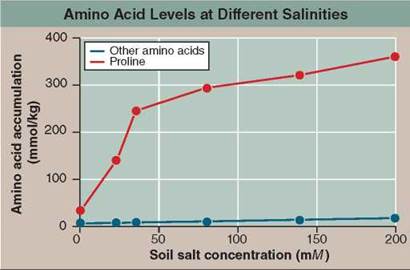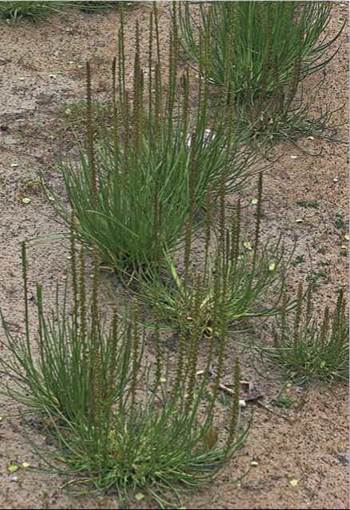THE LIVING WORLD
Unit Seven. Plant Life
32. Evolution of Plants
32.11. Fruits
Just as a mature ovule becomes a seed, so a mature ovary that surrounds the ovule becomes all or a part of the fruit. This is why fruit forms in angiosperms and not in gymnosperms. Both types of plants have tissue that surrounds the egg, called the ovule, which becomes the seed in both. But, in angiosperms, the ovule is surrounded by another layer of tissue, the ovary, which develops into the fruit. A fruit is a mature ripened ovary containing fertilized seeds. Fruits provide angiosperms with a second way of dispersing their progeny than simply sending their seeds off on the wind. Just as in pollination, they employ animals. By making fruits fleshy and tasty to animals, like the berries in figure 32.19a, angiosperms encourage animals to eat them. The seeds within the fruit are resistant to chewing and digestion. They pass out of the animal with the feces, undamaged and ready to germinate at a new location far from the parent plant.
Although many fruits are dispersed by animals, some fruits are dispersed by water, like the coconut in figure 32.19b, and many plant fruits are specialized for wind dispersal. The small, nonfleshy fruits of the dandelion, for example, have a plumelike structure that allows them to be carried long distances on wind currents. The fruits of many grasses are small particles, so light wind bears them easily. Maples have long wings attached to the fruit, as in figure 32.19c, that allow them to be carried by the wind before reaching the ground. In tumbleweeds, the whole plant breaks off and is blown across open country by the wind, scattering seeds as it rolls. Fruits will be discussed in more detail in chapter 34.

Figure 32.19. Different ways of dispersing fruits.
(a) Berries are fruits that are dispersed by animals. (b) Coconuts are fruits dispersed by water, where they are carried off to new island habitats. (c) The fruits of maples are dry and winged, carried by the wind like small helicopters floating through the air.
Key Learning Outcome 32.11. A fruit is a mature ovary containing fertilized seeds, often specialized to aid in seed dispersal.
How Does Arrowgrass Tolerate Salt?
Plants grow almost everywhere on earth, thriving in many places where exposure, drought, and other severe conditions challenge their survival. In deserts, a common stress is the presence of high levels of salt in the soils. Soil salinity is also a problem for millions of acres of abandoned farmland because the accumulation of salt from irrigation water restricts growth. Why does excess salt in the soil present a problem for a plant? For one thing, high levels of sodium ions that are taken up by the roots are toxic. For another, a plant's roots cannot obtain water when growing in salty soil. Osmosis (the movement of water molecules to areas of higher solute concentrations, see page 96) causes water to move in the opposite direction, drawn out of the roots by the soil's high levels of salt. And yet plants do grow in these soils. How do they manage?
To investigate this, researchers have studied seaside arrowgrass (Triglochin maritime), the plant you see below. Arrowgrass plants are able to grow in very salty seashore soils, where few other plants survive. How are they able to survive? Researchers found that their roots do not take up salt, and so do not accumulate toxic levels of salt.
However, this still leaves the arrowgrass plant the challenge of preventing its root cells from losing water to the surrounding salty soil. How then do the roots achieve osmotic balance? In an attempt to find out, researchers grew arrowgrass plants in nonsalty soil for two weeks, then transferred them to one of several soils which differed in salt level. After ten days, shoots were harvested and analyzed for amino acids, because accumulating amino acids could be one way that the cells maintain osmotic balance. Results are presented in the graph.

1. Applying Concepts
a. Variable. What is the dependent variable?
b. Concentration. What do the abbreviations "mM” and "mmol/Kg”mean?
2. Interpreting Data
a. In salt-free soil (that is, the mM soil salt concentration = 0), how much proline has accumulated in the roots after ten days? How much of other amino acids?
b. In salty beach soils with salt levels of 35 mM, how much proline has accumulated in the roots after ten days? How much of other amino acids?
3. Making Inferences
a. In general, what is the effect of soil salt concentration on arrowgrass plant's accumulation of the amino acid proline? of other amino acids?
b. Is the effect of salt on proline accumulation the same at low salt (below 50 mM) as at high salt (above 50 mM)?
4. Drawing Conclusions. Are these results consistent with the hypothesis that arrowgrass accumulates proline to achieve osmotic balance with salty soils?
5. Further Analysis. What do you think might account for the different rates of proline accumulation in low-salt and high-salt soils? Can you think of a way to test this hypothesis?

1. A major consideration for the evolution of terrestrial plants is the problem of
a. too much sunlight.
b. predators.
c. dehydration.
d. not enough carbon.
2. Which of the following structures or systems is not unique to plant evolution?
a. chloroplasts
b. vascular tissue
c. seeds
d. flowers and fruits
3. Mosses, liverworts, and hornworts do not reach a large size because
a. they lack chlorophyll.
b. they do not have specialized vascular tissue to transport water very high.
c. photosynthesis does not take place at a very fast rate.
d. alternation of generations does not allow the plants to grow very tall before reproduction.
4. One characteristic that separates ferns from complex vascular plants is that ferns do not have
a. a vascular system.
b. chloroplasts.
c. alternation of generations in their life cycle.
d. seeds.
5. As seed plants evolved, the _____ form became more dominant in the life cycle.
a. gametophyte
b. gymnosperm
c. sporophyte
d. angiosperm
6. In seeds, the endosperm helps with
a. fertilization.
b. photosynthesis.
c. nourishment.
d. dispersal.
7. What separates the gymnosperms from other seed plants?
a. a vascular system
b. wind dispersion of pollen
c. ovules not completely covered by the sporophyte
d. fruits and flowers
8. What separates the angiosperms from other seed plants?
a. a vascular system
b. wind dispersion of pollen
c. ovules not completely covered by the sporophyte
d. fruits and flowers
9. Flower shape and color can be linked to the process of
a. pollination.
b. photosynthesis.
c. germination.
d. secondary growth.
10. Monocots and dicots differ in all of the following ways except
a. vein patterns in the leaves.
b. the process of double fertilization.
c. the number of flower parts.
d. the number of cotyledons.